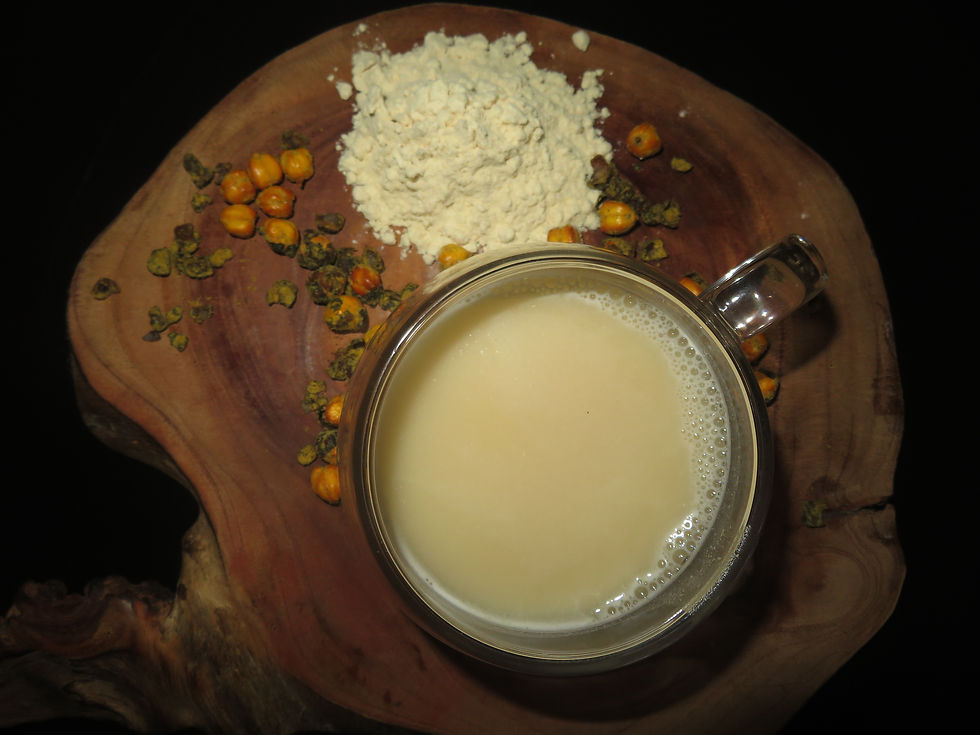Steeped in tradition
- mitu khaitan
- Apr 20
- 3 min read
Tea, tradition, technology; Part 1

Indian black tea isn’t just a drink, it’s a national obsession and a daily ritual. It’s the savior of monsoon mornings, the hero of sleepy afternoons, and the excuse for “just one more” biscuit at 5:00 PM. Whether it’s sipped on a busy train platform in a paper cup or served in delicate porcelain at home, chai made with good old-fashioned CTC tea is the warm hug we all need.
Indian black tea has roots that stretch back to the colonial era, when British planters established tea estates across Assam and Darjeeling. Over time, India developed its own processing methods. CTC, a technique developed for speed and consistency, became the most widely used format, especially for strong teas that hold up well with milk and spices. From high-end estates to railway platforms, this robust tea quickly became part of the cultural fabric of India. Today, there are many variations; from sweet and spicy masala chai in the west to salty brews in the north. This reflects our country’s diversity and deep affection for teas.
In my own home, tea has always been more than just a drink, it’s a moment. The question “Shall I make chai?” is less of a request and more of a cue that everything else can wait. My mother’s chai, in particular, is something that will always feel like home. Always strong, never hurried, and brewed in a well-worn aluminum pan, it is a recipe that exists only in her hands. No measuring spoons, no exact steeping time, just instinct, precision, and years of practice. Over time, I’ve realized that every home has its own version of chai, shaped by family preferences, regional influences, and personal taste.
Beyond tradition, black tea also carries scientific significance. It is naturally rich in antioxidants such as theaflavins and thearubigins, which have been linked to improved heart health and reduced oxidative stress. Its caffeine content, though lower than coffee, provides a more sustained and gentle boost of energy. At the same time, as with all agricultural products, its quality is deeply tied to its environment. Soil health, water purity, and farming practices directly influence not just flavor but safety, making responsible sourcing an increasingly important part of the tea conversation.
Interestingly, Indian tea is now also at the forefront of innovation. Across plantations, technology and artificial intelligence are being used to monitor soil conditions, predict optimal harvest times, and reduce waste in production. On the consumer side, automated tea dispensers and smart brewing systems are being developed to ensure consistency and customization, serving fresh, high-quality cups in offices and cafés. It’s a reminder that even the most traditional experiences can evolve when guided by purpose and precision.
Still, for all its technological advancements, the essence of chai remains wonderfully unchanged. The sound of boiling water, the fragrance of crushed ginger and cardamom, the gentle swirl of tea leaves meeting milk, these are the things that ground us. Tea continues to bring people together, spark conversations, and create quiet pockets of comfort on busy days. It reminds us that slowing down, even briefly, can be an act of care.
Indian black tea is more than just a staple of the pantry. It is a vessel of memory, science, culture, and innovation. From colonial estates to family kitchens, from hand-picked leaves to AI-assisted brewing, it has travelled far and adapted with grace. And yet, at its core, it remains what it has always been: a strong, steady presence that welcomes us back with every sip.
So the next time you prepare a cup of tea, whether it’s a carefully spiced masala chai or a simple ‘kadak’ chai, pause for a moment. You’re not just holding tea. You’re holding a tradition, a story, and a bit of home.








Comments